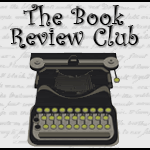 |
| Elba Island, Italy at sunset |
Before leaving for our one-month vacation to England and Italy, we gave our kids early birthday presents of Kindles. Since the Amazon account was in my name, all my ebooks were automatically archived on their Kindles. When I buy a new ebook, we can have it delivered to all three devices (or select just one) for no extra charge. This had the added advantage of being able to read one book simultaneously. The kids and I had many wonderful conversations over shared books, something I’d missed since they became independent readers.
 |
| Hill town of Elba Island |
 |
| Elba Island, Italy |
The Kindles were great for travel! Our bags were much lighter, and we never ran out of reading material. Since the kids’ Kindles were wifi only, we had download books before leaving home. I also uploaded our itinerary and other important documents. Kindle did the conversion via email for free. Even abroad, I could download books anywhere with no surcharge via 3G on my Kindle and then transfer ebooks to the kids when we found wifi. Wifi connections in Europe were harder to come by, rarely free and often unreliable.
 |
| Beachside restaurant on Elba Island |
Even my husband, who has an iPad2, covets a Kindle now. Mine was a gift from him. Kindles handle challenging light really well. Font size could be adjusted in dim light or if reading glasses were misplaced. You can even read outside without glare, just like a real book but unlike the iPad.
Figuring out how to charge our devices while abroad took some ingenuity. Kindle Help was not helpful but, I figured out that the Kindle’s charger would work in Europe with standard adapter plugs. We also got a car USB charger. The Kindle battery is meant to last a month with wifi/3G turned off, but on vacation we had to recharge about every 10 days. Reading more hours and using Amazon Kindle case reading lights ran the batteries down sooner.

Kindles should be ideal for travel guides. We could all simultaneously reference the
Lonely Planet Guide to Italy without having to lug around the heavy 900-page guidebook. I used it to find affordable hotels and restaurants and to look up historical information on site. However, the maps were illegible and several links didn’t work. Then there were formatting issues: Kindles are designed for sequential reading, not for jumping around. Also, many guidebooks, like the Michelin ones, were not available on Kindle.

Only recently published books and classics (often for free!) are available. I had chosen the Kindle because it had the most titles of any ereader on the market, but it wasn’t enough. One of my favorite novels ever,
A Suitable Boy by
Vikram Seth, would be perfect for the Kindle since it’s nearly 1,500 pages, but it was not available as an ebook. My 16-year-old son bought a used paperback copy at an
English bookstore in Florence and lugged that brick off camping in the wilderness too. He’s my son!

There is an educational advantage to the Kindle’s limitations. Although my son figured out how to use his Kindle to get on Facebook, it was difficult to navigate without a real web browser. This summer was spent offline. Usually an X-box player, my son read more novels for fun on vacation than he had all year. His favorite ebook was
The Invisible Bridge by
Julie Orringer, 600-page historical fiction. To his surprise, he also liked
Looking for Alaska by
John Green. My son usually avoids young adult fiction, but he opened this favorite book of mine thinking it was a travel book. He got caught up in the story of a wild girl (called Alaska) and a thoughtful boy. He went on to read
Paper Towns, also by John Green, but said it was too similar. On this trip, my son read more than me!

My 13-year-old daughter’s favorite ebooks were
Beauty Queens by
Libba Bray and the Dairy Queen trilogy by
Catherine Gilbert Murdock, all in young adult fiction. My daughter liked the Kindle so much that she took hers to camp. Ereaders are allowed with Wifi off, but we’ll have to charge it on visiting day. I sent her with a few real books, as a back up.
Ereaders aren’t for everyone, but I suspect their popularity will rise as the publishing world adapts to the internet age. We’re getting a Kindle for my mother-in-law for Christmas since there are limited large print books at her public library. My mother, however, didn’t like the feel of a Kindle and preferred to lug real books around Italy. Although I love my Kindle for travel, I still buy real books from independent bookstores to read at home.
 |
| Bookstore at Portoferraio, Elba Island |
Related Posts:






















